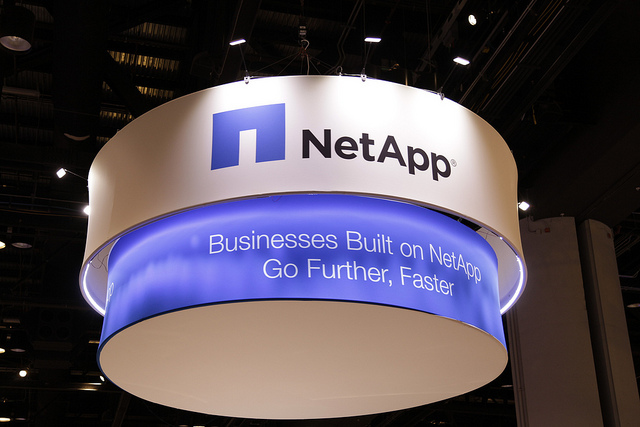 INFRA
INFRA
 INFRA
INFRA
 INFRA
INFRA
NetApp Inc. is bolstering its product portfolio with three new flash arrays and updated versions of its cloud-based storage services.
The company detailed the product updates at its annual Insight 2023 conference, which is taking place today in Las Vegas. NetApp also used the opportunity to enhance Keystone, a service that allows customers to buy on-premises storage systems on a pay-as-you-go basis. Keystone now provides new performance and uptime guarantees, along with a feature that ensures customers can recover their data after a ransomware attack.
NetApp is expanding its hardware portfolio with a trio of flash arrays collectively known as the ASA C-Series. They store information as blocks, one of the three forms in which enterprise storage systems typically keep records. Blocks are more difficult to manage than other types of data, but they provide increased performance.
Up to 12 ASA C-Series arrays may be linked together to create a single storage environment. Depending on which specific ASA C-Series model is used, that environment can provide effective capacity of between 17.5 petabytes and 88 petabytes. Effective capacity measures the amount of data that a storage cluster can hold after space-saving techniques such as compression are applied.
The speediest flash systems on the market can read and write data with latency of than one millisecond. According to NetApp, its ASA C-Series arrays are designed to balance speed with cost efficiency. They reportedly offer latency in the two- to four-millisecond range, which is suitable for applications that are considered mission-critical but don’t always have to maximize performance.
NetApp says that databases are one type of workload that companies can run on their ASA C-Series systems. Powering VMware environments is another target use case for the product series.
“NetApp ASA storage provides customers with a tailored solution to deliver high-performance and guaranteed high availability (99.9999%) storage for critical applications, databases, and VMware infrastructure,” said Sandeep Singh, the senior vice president and general manager of NetApp’s enterprise storage business.
The ASA C-Series is powered by NetApp’s Ontap storage operating system. The software provides features that make it easier for administrators to manage their companies’ storage arrays. Ontap includes, among other capabilities, a tool that can back up data from on-premises hardware to the cloud.
NetApp debuted the new flash arrays alongside an update to Amazon FSx for NetApp ONTAP, a cloud-based version of Ontap available on Amazon Web Services. It eases the task of moving on-premises workloads to the cloud. For administrators, migrating an Ontap-powered workload to an Ontap-powered AWS environment requires fewer configuring changes than switching to an entirely different type of storage infrastructure.
FSx for NetApp ONTAP is gaining new networking capabilities as part of today’s update. According to NetApp, customers can now move data between the service and their VMware Cloud on AWS environments using VPC Peering. This is a feature that makes it possible to send traffic over AWS’ internal network rather than the public internet, which improves security.
In conjunction, NetApp is enhancing the file storage services it provides for Microsoft Azure and Google Cloud. Those services allow customers to back up files from their on-premises hardware to the cloud. Additionally, the offerings make it easier to move on-premises workloads to Azure and Google Cloud.
Microsoft Azure NetApp Files is gaining performance improvements designed to speed up Oracle databases. Additionally, a newly added automation feature can move infrequently used records to Azure Cool Blob storage. This is a type of storage infrastructure provided by Microsoft that costs significantly less than standard Azure capacity.
NetApp’s file storage service for Google Cloud, Google Cloud NetApp Volumes, is also becoming more cost-efficient. The company has added support for a new type of cloud storage infrastructure that costs 30% less per gigabyte than the previously available options.
Capping off the updates is a new release of NetApp’s BlueXP service. Introduced last November, the service allows administrators to manage on-premises and cloud-based storage infrastructure through a centralized interface.
BlueXP is gaining a new disaster recovery tool that is currently in public preview. Should a storage cluster malfunction, administrators can use the tool to quickly switch workloads to backup infrastructure running either in the cloud or on-premises. Moreover, BlueXP can move workloads back to the original storage cluster once the issue is resolved.
Support our mission to keep content open and free by engaging with theCUBE community. Join theCUBE’s Alumni Trust Network, where technology leaders connect, share intelligence and create opportunities.
Founded by tech visionaries John Furrier and Dave Vellante, SiliconANGLE Media has built a dynamic ecosystem of industry-leading digital media brands that reach 15+ million elite tech professionals. Our new proprietary theCUBE AI Video Cloud is breaking ground in audience interaction, leveraging theCUBEai.com neural network to help technology companies make data-driven decisions and stay at the forefront of industry conversations.